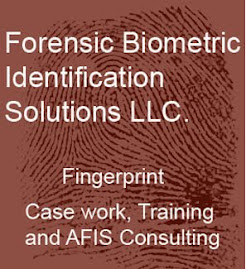Read the 2007 paper by Roger Koppl "CSI for Real: How to Improve Forensics Science". The paper is well written, thoughtful and accurate. The paper presents some very good ideas on how to improve the system. What caught my eye was the study of proficiency tests conducted by the Forensic Sciences Foundation (FSF) and Collaborative Testing Services (CTS) from 1978-1991.
In the fingerprint test they “attempted to simulate actual conditions by creating smudged, elongated, compressed and other irregular latent print specimens.” The best results were for
the group that included finger and palm prints, the rate of false identifications for the period was 2 percent. The researchers estimate that fingerprints appear in roughly 7 percent of felony case filings each year. Roughly 924,700 adults were convicted of a felony in State courts in 2000” and another 77,000 in U.S. district courts. These numbers suggest that about a million felony cases are brought to trial and concluded each year. Approximately 70,000 involve fingerprint evidence. It can reasonably be inferred, that of these 70,000 cases, at least 2 percent or 1,400, involve a false identification. The identification of a latent print lifted from a crime scene with an inked print from a suspect will usually produce a conviction.
The 2% figure is consider low by some, other studies have produced greater percentages of error, regardless, even a small percentage of errors produce a significant number of incorrect identifications. While not discussed in the article the number of missed identifications is significantly larger and is another cause of individuals being wrongly convicted.
While Prof. Koppl has some excellent suggestions, in the interim it is the responsibility of defense counsel to insure fingerprint evidence is accurate and reliable. The adversarial system of justice allows even fingerprint evidence to be questioned and tested to insure accuracy. In today's electronic world fingerprint evidence being brought to trial in NY, can be evaluated by an independent examiner in NE or any other state. The costs, because travel and shipping are no longer an issue, are reasonable enough that every defendant should be able to have an evaluation of the fingerprint evidence.
Bob McAuley
Dir. Operations/Training
Forensic Biometric Identification Solutions LLC.
Wednesday, August 5, 2009
How to obtain more reliable fingerprint evidence
Subscribe to:
Post Comments (Atom)






1 comment:
I will post this for the forensics students in the UK. This is excellent practical info
Amy Price PhD
Post a Comment